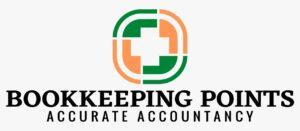A messy set of books can be a major headache for small business owners. Inconsistent financial records, missing transactions, and outdated information can make it difficult to get a clear picture of the business’s financial health and make informed decisions. However, with the right approach, it is possible to clean up even the messiest set of books and get back on track.
Step 1: Assess the extent of the problem. Before starting the clean-up process, it is important to understand the extent of the mess. This includes reviewing financial records, checking for missing transactions, and identifying areas where information is inconsistent or outdated. The more information you have about the problem, the easier it will be to create a plan for addressing it.
Step 2: Develop a plan of action. Once you have a clear understanding of the extent of the problem, it is time to develop a plan of action. This may involve implementing new accounting systems and procedures, hiring a bookkeeper or accountant to assist with the clean-up, or a combination of these approaches. It is important to create a plan that addresses the specific needs of the business and sets achievable goals.
Step 3: Gather all necessary information. In order to clean up a set of books, you need to have access to all of the necessary information. This may include bank statements, receipts, invoices, and other financial records. It is important to gather all of this information as soon as possible to minimize the time and effort required for the clean-up process.
Step 4: Reconcile accounts. One of the most important steps in the clean-up process is reconciling accounts. This involves matching transactions in the company’s financial records with bank statements and other records to ensure that the information is accurate and up-to-date. It may take some time to reconcile all of the accounts, but it is a critical step in ensuring the accuracy of the financial information.
Step 5: Update financial records. Once accounts have been reconciled, it is time to update financial records. This may involve entering missing transactions, correcting errors, and updating information to ensure that the records are accurate and complete. It is important to take the time to make sure that all of the information is correct, as this will make it easier to track the financial performance of the business in the future.
Step 6: Implement new accounting systems and procedures. Implementing new accounting systems and procedures can help ensure that the clean-up process is successful and that the books remain in good order going forward. This may involve using new software, adopting new processes for tracking and reconciling transactions, or implementing new policies and procedures for managing financial information.
Step 7: Review and monitor progress. Finally, it is important to review and monitor progress on a regular basis. This may involve regular audits of financial records, checking that new systems and procedures are working as intended, and making changes as needed. By continuously monitoring the financial health of the business, it is possible to ensure that the clean-up process is successful and that the books remain in good order going forward.
In conclusion, cleaning up a messy set of books is a challenging but necessary task for small business owners. By following a structured approach, gathering all necessary information, reconciling accounts, updating financial records, implementing new accounting systems and procedures, and reviewing and monitoring progress, it is possible to get the financial information of the business back in order and make informed decisions about the company’s future.






